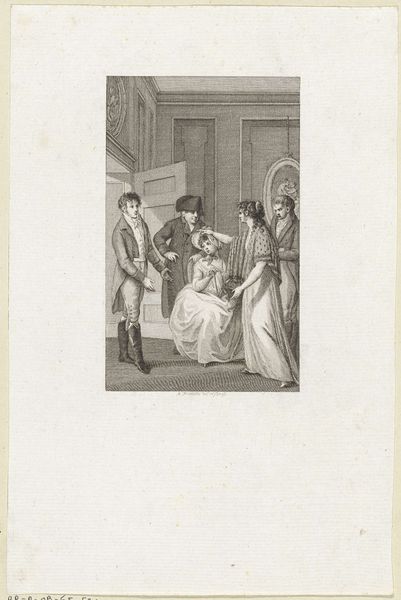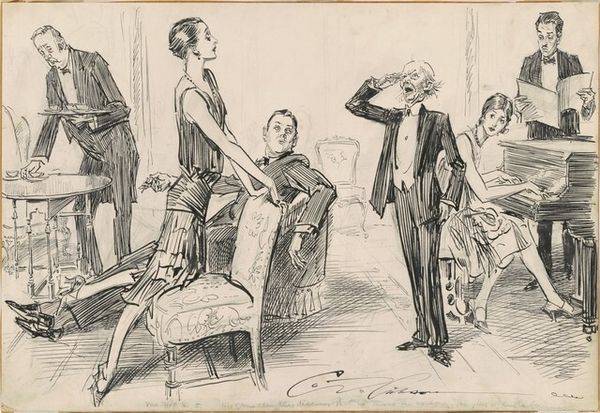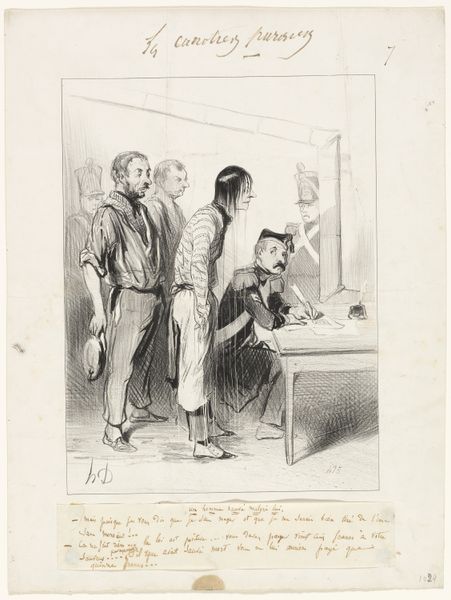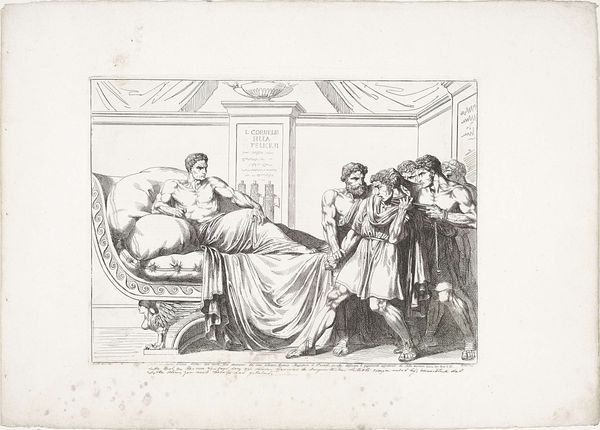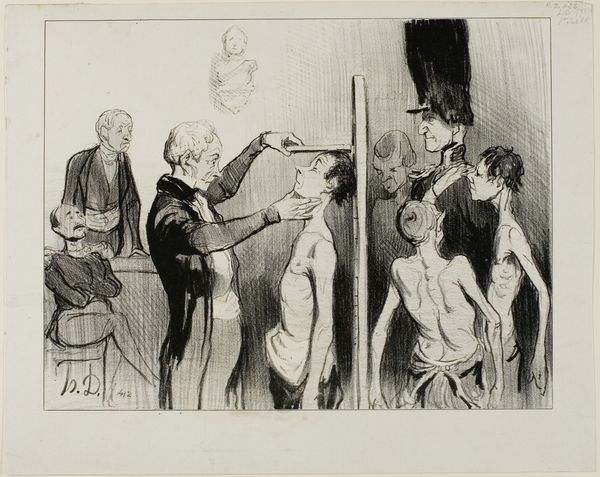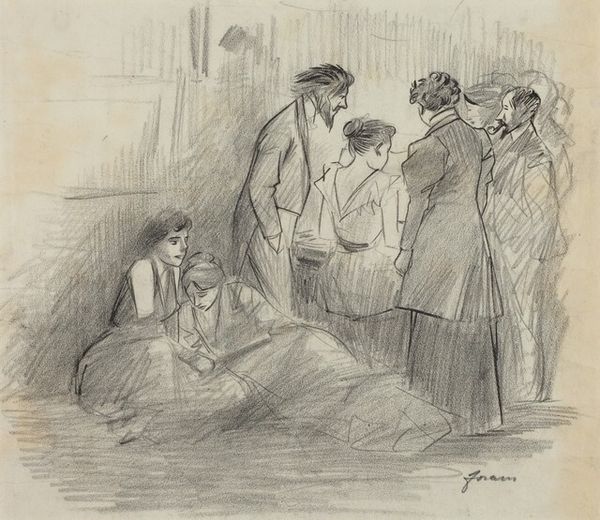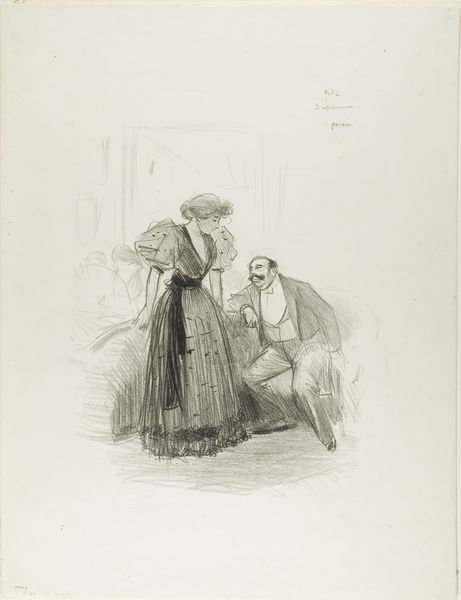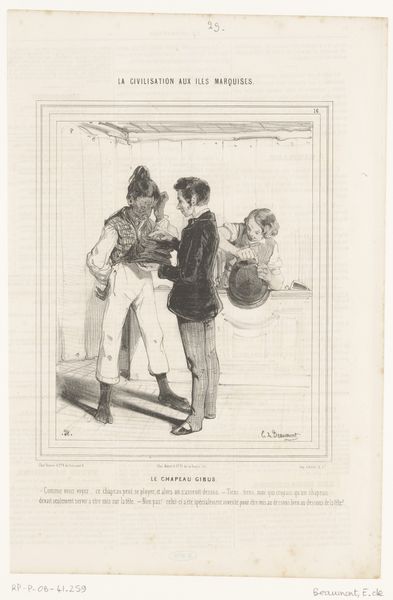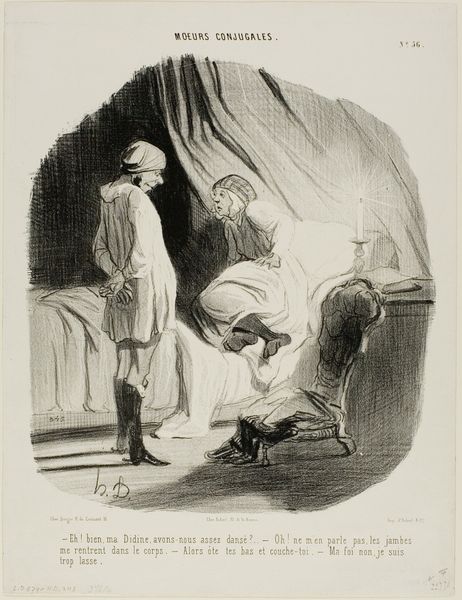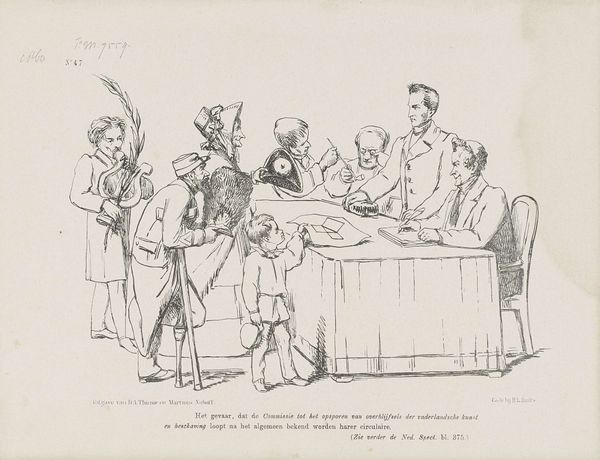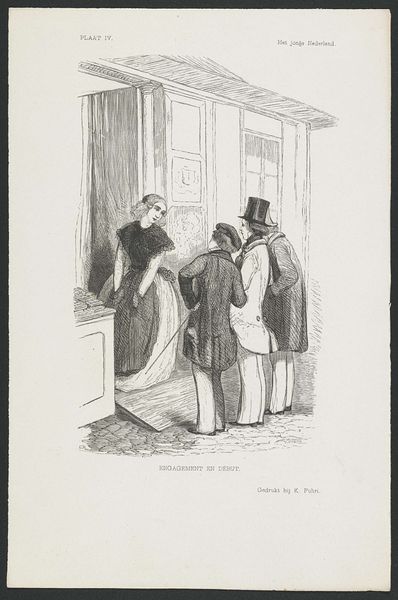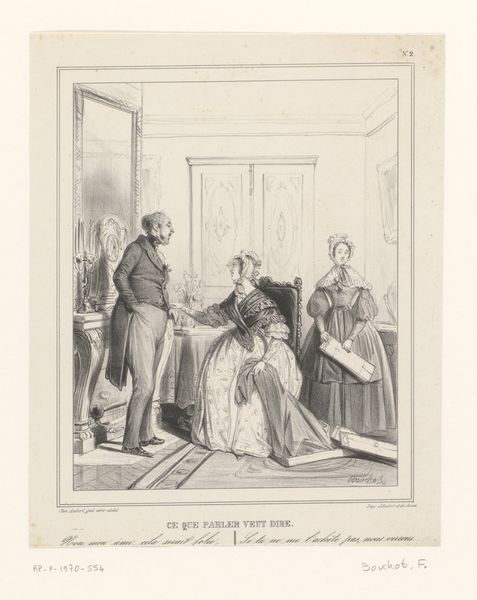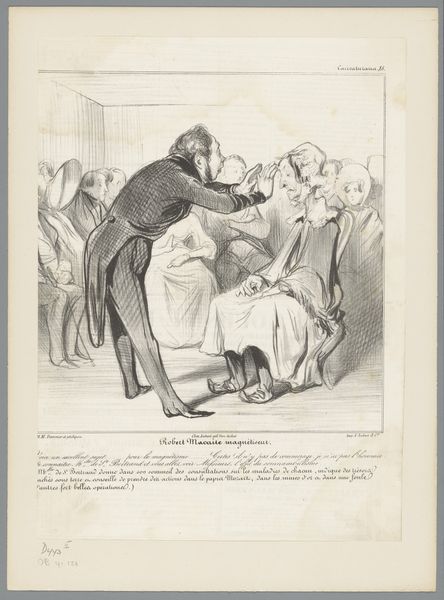
drawing, pen
#
drawing
#
pen illustration
#
figuration
#
sketchbook drawing
#
pen
#
genre-painting
Dimensions: height 278 mm, width 185 mm
Copyright: Rijks Museum: Open Domain
Rombertus Julianus van Arum made this print, Bal-tijpe, using engraving, a process demanding meticulous skill. Engraving involves incising lines directly into a metal plate, in this case probably copper, with a tool called a burin. The depth and density of these lines determine the darkness and intensity of the printed image. See how the crisp, precise lines create a sense of depth and texture, defining the figures and their elaborate clothing? This technique, requiring years of training and a steady hand, was at its peak during the 19th century, when the print was made. While seemingly simple, the production of such a print involved many steps, from preparing the metal plate, to inking, to finally pulling the print, usually with the help of a mechanical press. The resulting image, capturing a scene from high society, speaks volumes about the labor and social context embedded in its creation. Understanding the making helps us to think about the value we assign to the object, and also the many hands involved in its creation.
Comments
No comments
Be the first to comment and join the conversation on the ultimate creative platform.
